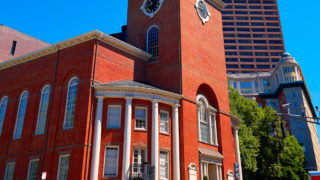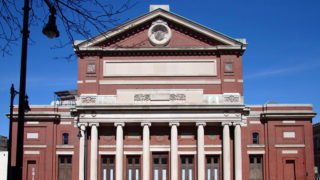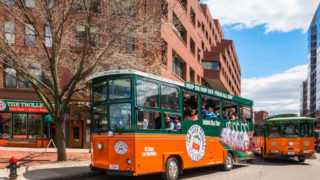Museum of Science (MOS)
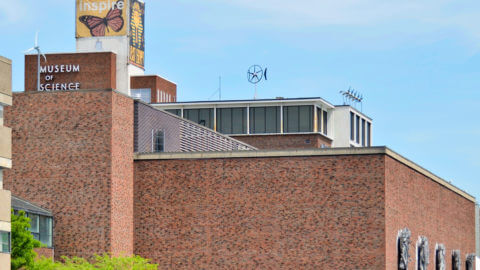
Boston’s Museum of Science, located on the Charles River Basin, has over 500 interactive exhibits and a variety of live presentations throughout the day. The museum also features a planetarium, New England’s only domed IMAX, a theater of electricity with one of the world’s largest Van de Graaff generators, and exhibits from the original Computer History Museum. Beginning with a collection of men sharing scientific interests in the early 1830’s, the museum still houses some of the artifacts that were originally stored and displayed.
One of the largest institutions of its kind in the world, the Museum of Science in Boston is the most popular cultural attraction in New England. More than 1.4 million people visit the museum annually to discover and explore the scientific world around them. The science center features more than 500 fun and educational interactive exhibits and live presentations that share information about the STEM fields of science, technology, engineering and math. The museum features a planetarium, one the largest Van de Graaff generators in the world and the only domed IMAX theater in New England. It also includes many exhibits from the former Computer History Museum. This attraction will astound adults and kids alike. The institution’s location provides spectacular views of the Charles River as well as the Boston and Cambridge skylines. The setting is adjacent to the original Charles River Lock just west of the Charles River Dam Bridge.
History of the Museum of Science
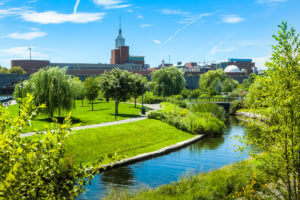 Sharing Science with the Masses
Sharing Science with the Masses
A group of men who wished to share their scientific experiences founded the museum in 1830 as the Boston Society of Natural History. It was the first institution to combine all types of science and technology under one roof. The science center was commonly referred to as the Boston Museum of Natural History throughout the 19th century. After being housed in several temporary spaces, the museum constructed a permanent facility in Boston’s Back Bay neighborhood in 1862. This structure was adjacent to the original campus of MIT, then known as Boston Tech. Over the next century, the museum continued to expand and eventually outgrew its space.
Expanding the Mind
The current museum opened in 1951 after three years of construction. The MBTA opened the Science Park subway station for easier access to the exhibits in 1955. The Charles Hayden Planetarium opened three years later. Over the ensuing decades, the museum continued to grow and expand through a series of renovations. The main entrance straddles the boundary between the cities of Boston and Cambridge, which is delineated by a marker etched in the floor inside the museum.
The Three Wings & Their Exhibits
In addition to hosting various temporary exhibits, the Museum of Science boasts an extensive permanent collection of science-oriented artifacts, objects and memorabilia. Museum displays include several pieces from its original 19th-century collection.
Blue Wing
Serving as the museum’s main hall, the Blue Wing houses the majority of the science center’s exhibits, including the walk-through Butterfly Garden habitat and Seeing is Deceiving, a collection of optical illusions. Other exhibits enable visitors to discover how mathematics plays a role in daily life, the science behind electricity and the laws of motion. You can also learn about dinosaurs and fossils, the human body and nanotechnology. While the Yawkey Gallery demonstrates the connection between the natural world and numerous man-made designs, the To the Moon exhibit enables you to learn how astronauts explored outer space. You can also discover the science behind light and color as well as geological formations. The Science in the Park exhibit highlights the scientific laws that affect the human body as it swings, runs, slides and jumps on the playground. See how maps have chronicled the changing landscape of human history, and discover the process required for wind, water and solar power to produce renewable energy.
Green Wing
The Green Wing is the location for the New England Habitats and A Bird’s World galleries. The New England Habitats gallery showcases the region’s biodiversity, including the rocky shoreline, salty marshes and lush forests as well as the animals that inhabit these diverse settings. A Bird’s World displays a specimen of every avian species found in New England.
Red Wing
The Red Wing features the Discovery Center where visitors can participate in experiments and speak with scientists. It is also the setting for the Hayden Planetarium and the Mugar Omni Theater, New England’s largest IMAX theater. The planetarium features a variety of star shows throughout the day that provide an awe-inspiring glimpse of the heavens. The IMAX theater surrounds patrons with larger-than-life images of natural beauty.
Other Permanent & Temporary Exhibits
The museum is also home to a polarized light collage by Austine Comarow, a stairway fitted with photoelectric cells that trigger musical sounds and a large rolling ball sculpture reflecting Archimedes’ principle by George Rhoads.
The science center honored the National Park Service on its 100th anniversary with a temporary exhibit focusing on the treasured sites entrusted to the agency’s care. There is also an exhibit highlighting the genius of Leonardo da Vinci. Past temporary exhibits include the science behind Pixar’s animated films and the Star Wars movie series.
Travel Tips & Museum Information
Hours of Operation & Best Times to Visit
The science center opens daily at 9 a.m. and closing times varying during the week. It is closed for the holidays on Thanksgiving, Christmas and New Year’s Day. The museum extends its hours during the busy summer months. A popular destination for school field trips, the attraction can also be crowded on weekends. The best times to visit are before 11 a.m. and after 4 p.m. Check out the museum’s website for up-to-date information regarding hours of operations. While you’re online, you can save money by ordering tickets in advance. The museum has several eateries on-site that offer pizza, barbecue, sandwiches and salads as well as a range of other menu items.
 Getting to the Museum
Getting to the Museum
Because the museum’s parking garage fills up quickly, the best way to reach the attraction is by taking a sightseeing tour that stops near the building or the subway. Hop aboard Old Town Trolley or an entertaining and informative tour of Boston. With unlimited reboarding privileges, you can hop on the trolley at any of its various stops and hop off at Stop #4 to visit the Museum of Science. When you’re done exploring the exhibits, hop back on another trolley to continue the adventure around Beantown. For public transportation, the Science Park stop is on the Green Line. You can transfer to the Green Line from the Red Line at Park Street and the Orange Line at Haymarket or North Station. If you ride the Blue Line, transfer onto the Orange Line at State Street. Use a Charlie Card to save money on public transportation.
Nearby Attractions
 The Sports Museum
The Sports Museum
Founded in 1977, the The Sports Museum is dedicated to chronicling the history of various sports in the Boston area. The attraction has life-size statues of legendary sports figures Ted Williams, Carl Yastrzemski, Larry Bird and Bobby Orr. In addition to the Celtics, Bruin and Patriots, the exhibits highlight boxing, soccer and college sports as well as the Boston Marathon. The museum is housed in the TD Garden, which sits atop North Station.
 North Point Park
North Point Park
Situated on the bank of the Charles River, North Point Park is an 8.5-acre open space that includes small islands, bridges, kayaking channels and scenic walking paths. The dog-friendly park also features a variety of play structures, a splash pad and picnic tables. In addition to shade trees and colorful flower plantings, the park has a marvelous view of the river and the Leonard P. Zakim Bunker Hill Memorial Bridge.
 Leonard P. Zakim Bunker Hill Memorial Bridge
Leonard P. Zakim Bunker Hill Memorial Bridge
The Leonard P. Zakim Bunker Hill Memorial Bridge, now an iconic fixture of the Boston skyline, opened as part of the roadwork known as the Big Dig. This major construction site was an effort to reroute traffic after the demolition of the old Central Artery. As a result, major roadways were diverted underground or across new bridges. Featuring a distinctive design, the cable-stayed bridge spans the Charles River to connect Boston and Charlestown. Its name honors Boston civic leader Leonard P. Zakim and the Battle of Bunker Hill, which took place in Charlestown.

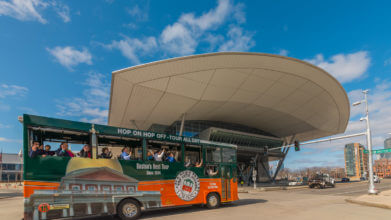
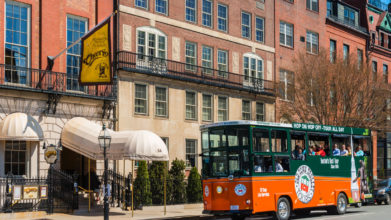
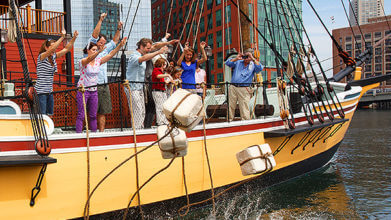

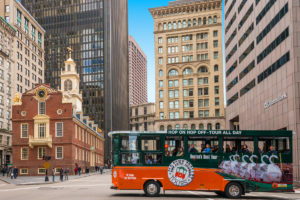 Getting to the Museum
Getting to the Museum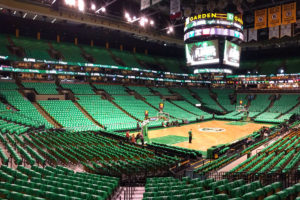 The Sports Museum
The Sports Museum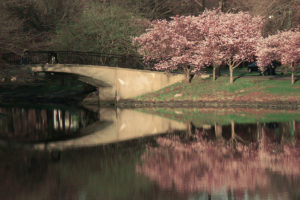 North Point Park
North Point Park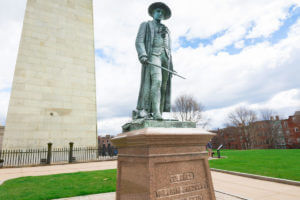 Leonard P. Zakim Bunker Hill Memorial Bridge
Leonard P. Zakim Bunker Hill Memorial Bridge